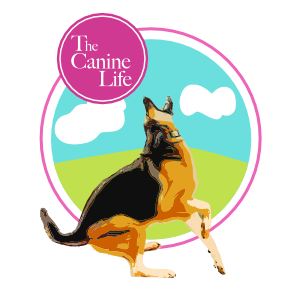Today I’m going to share about how to help your pet recover from dog surgery. But first, I’m going to tell you about my dog’s injury and surgery, in hopes our experience will help you and your dog.
I’m fanatical over my dog, WolfBear, he’s my world. I spend countless hours enjoying his companionship. When he got hurt racing down the stairs over a year ago, I was very worried.
When it became obvious his injury was serious, I was a mess. I began to experience the helplessness and anxiety that all dog lovers do when their pet gets hurt.
I was scared and imagined all sorts of horrible outcomes. Google was not my friend as I poured over all the diseases that could cause his symptoms.
I turned to our vet and friends for support. I could only pray, put my trust in God and the vet, and do everything I knew to do to help his body heal naturally.
The Injury
The problem was that Bear’s back right leg would buckle causing him to smack his right hip on the ground. He had pain in his right paw, sometimes causing him to hold his leg up and chew it at rest.
He had negative x-rays and physical exams so he started cold laser therapy and rest. During vet visits, his leg seemed fine, which made it all the more perplexing.
It was heart breaking to watch him struggle and nearly impossible to keep him down no matter how hard we tried. He has incredible drive and determination and he never gave up trying to do the things he loved-even if it meant falling on his hip.
After cycles of recovery and relapse, his pain worsened and his quality of life was deteriorating. Our vet had me video his leg buckling and referred us to a vet specialty hospital in Austin.
A neurologist and two orthopedic vets ruled out a leg and paw injury. They suspected a low back problem, which was confirmed by an MRI. Bear had a ruptured disc that was pressing on the nerve above his tail. It was pretty bad and even I could see it clearly. D dog surgery was the last thing we wanted.

But, his prognosis was not good without surgery. After much discussion, research, getting an opinion from a holistic vet, and sending his MRI to an animal chiropractor, surgery was scheduled.
Bear’s Dog Surgery
The day of his dog surgery was very emotional for us. It was nearly impossible to leave him. His decompression laminectomy was a success. The hospital was far from home so we spent 3 days at a local hotel while he was in ICU.
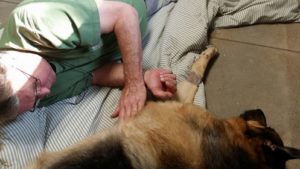
The Road to Recovery
The surgery was the first step toward his recovery. We had to make a huge commitment to his after care. His prognosis depended on us exactly following the post op instructions. If we didn’t, he would not heal and he’d require a second operation to insert plates and bolt his spine. A dog surgery nightmare.
The thought still gives me shivers…
The rules:
No running, jumping, slipping, or playing for 10 weeks.
Leashed at all times when not kenneled or confined to one small room with no furniture.
No getting on furniture or a bed (even with stairs).
He was allowed very short walks in the fenced yard for fresh air and exercise.
Cone 24/7 for two weeks to prevent pulling a stitch (it would mean staples and increased risk of infection.
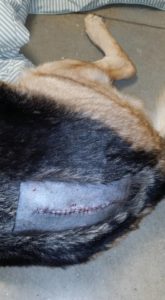
No car rides except to the vet.
Daily Life after Dog Surgery
Imagine having your dog tethered to you for 10 weeks-everywhere you go, they go.
He would awaken numerous times a night so we put a mattress on the living room floor so that we could lie down with him. Our new routine included going out at 4 am followed by napping with him on the living room floor until 7 am.
He was restless, in pain, depressed, confused, and would pant a lot. Normally confident and afraid of nothing, he seemed vulnerable, insecure, and jumpy.
I wrote down every dose of medication and fed several small meals so that he could have food with his meds. I gave up on hiding meds in his food, cheese or peanut butter and opted to hide them in blueberry cream cheese (tip from the surgeon and he loved it).
I helped him with his hygiene so that he wouldn’t have to twist and bend.
After 10 weeks, he was allowed to slowly resume his normal routine. He had physical therapy, cold laser, T Touch, and acupuncture to help him recover. We continued his nutritional and supplement plan as well as implemented exercises to strengthen his back.
How to Help your Pet Recover after Dog Surgery
There are dogs out there that have suffered much worse and my heart goes out to their owners. I hear from people every day who are looking for someone to talk to. We all share the same fears and concerns-namely getting our pet healthy so they can resume the best life possible, as soon as possible. We are all terrified to lose them.
My best advice for helping your dog through and injury and surgery is:
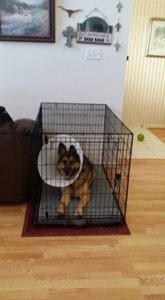
Follow your gut. If you don’t feel something is right, trust yourself.
Find a vet you can trust. If you don’t feel confident in your vet’s diagnosis, get a second or third opinion. It is helpful to have one that complements your choice to follow a natural lifestyle.
Go to a specialist. There is no replacement for a specialist. Video your dog’s symptoms, if needed.
Expect diagnostic testing. There is no way around it; your dog may need an MRI, or other expensive test, for a definitive diagnosis and treatment.
Do your research. Educate yourself and ask questions about the diagnosis, prognosis, procedure and aftercare. Find out what will be normal behavior and what you can expect the first few days after surgery.
Turn your fear into action. Turn to supportive friends and family. It’s ok to be scared but turn your fears into action. Own the decisions you make for your pet and don’t become paralyzed with fear.
Write everything down. I guarantee that you will only remember half of the instructions when you bring your dog home so take notes-even if given written instructions.
Be prepared. Purchase what you’ll need and prepare your home before surgery so that when you get home, you can focus on your dog.
Take time off. If possible, plan to take some time off or arrange for someone to watch your dog. I work from home so that was not a problem but this could be a major undertaking for some.
Be kind to yourself. Make things easy on yourself. Be prepared by buying easy to cook meals, clean your house before the surgery, try to enjoy the downtime, simplify to reduce stress.
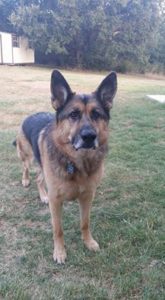
Natural Healing Support:
- Follow the Laws of Health
- Boost the immune system to encourage healing and reduce the possibility of infection
- Follow a carnivore diet
- Add appropriate supplements
- Herbs
- Enzymes/natural anti-inflammatories
- Essential oils
- Bone broth
- Consult with your vet to ensure no drug interactions
Our dogs are family, best friends and companions. It’s normal to feel stressed and worried over them. By recognizing this and remaining calm, confident and positive-it will help ease their fears and stress level as well as your own.
Your commitment to aftercare and a natural, healthy canine lifestyle, will help your dog heal and live the best life possible, for as long as possible.
